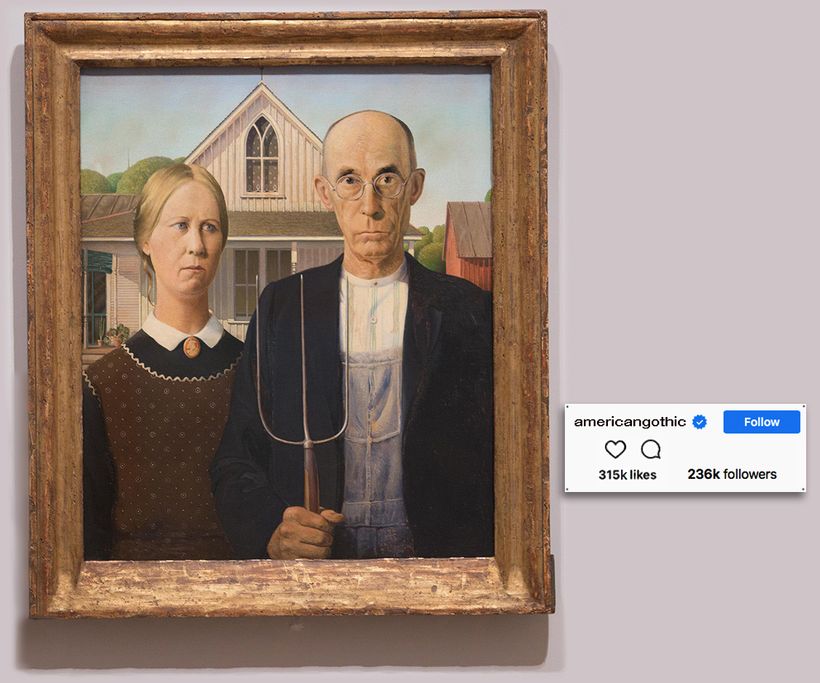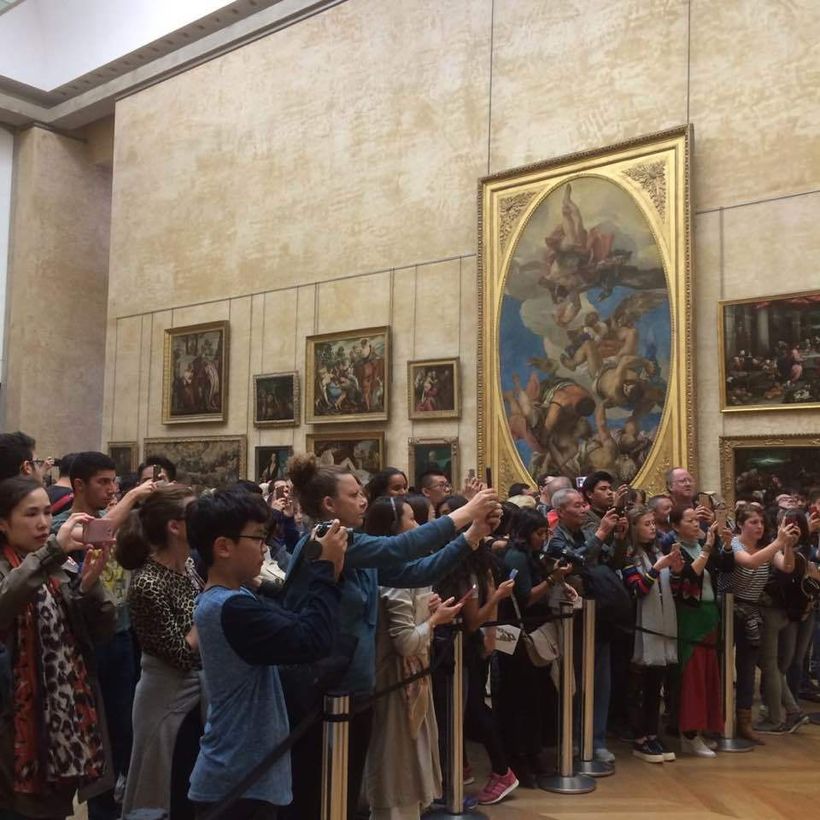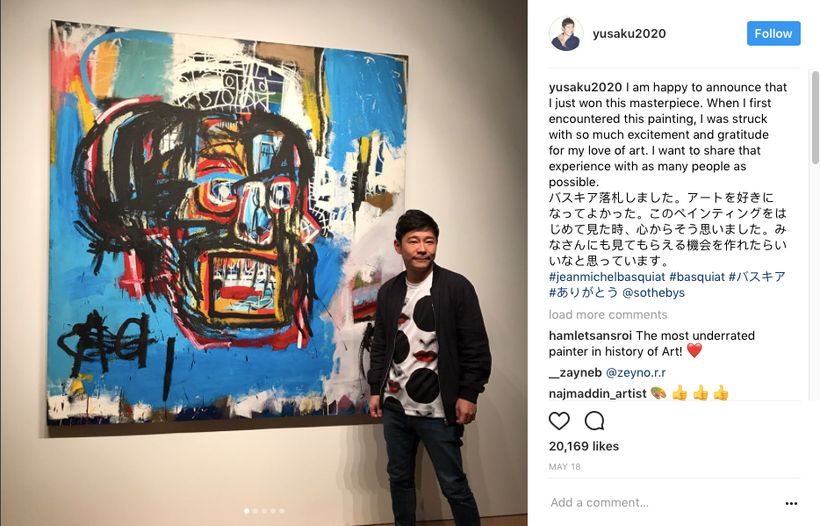DIGITAL COLLAGE BY JOHN SEED
Art lives through attention, right? Without a pair of eyeballs looking at it—hopefully eyeballs that are working in concert with a focused, attentive brain—a painting is just a piece of canvas smeared with colored mud. Or, in the digital age, where paintings are increasingly viewed on museum websites and social media, a hi-resolution jpeg.
Speaking of attention, if you made it past my first two sentences that is something of an accomplishment. My first editor at the HuffingtonPost once told me that for every 100 clicks (pages views) only one reader would read my blog in its entirety. That’s a grim statistic, but likely an accurate one. We are living in an age when content is everywhere and attention is scarce. So, if you need to quit reading now and check your e-mail, I entirely understand.
“Like” it or not (pun intended) visual art is also content, especially when presented on the web. So although you may want to think of art as somehow exceptional—and when experienced in person it often is—artists working today have to recognize that when their work appears on the net it is part of a virtual tsunami. The research firm Deloitte estimates that 2.5 trillion digital images were shared or stored last year. Many of them ended up on Instagram—posted by one of more than 700 million users—where they face a 1.1% “engagement rate.” In other words, an image posted on Instagram has about the same chance of being “liked” as this blog has of being entirely read by you.
It’s time for visual artists to do some serious study of a digital age phenomenon that has been called the “Attention Economy” In essence, attention economics posits that human attention is scarce and that our receptiveness to information—both on the web and off the web—is is becoming increasingly limited. What are the implications for art and artists, especially those who are depending on their personal websites and social media to disseminate their work? It’s also worth asking a related question: is the glut of imagery also changing the way that attention is paid to actual works of art in museums and galleries?
Perhaps some of what the marketing people already know about the attention economy can be applied to the presentation of art. For example, one expert says that there are eight “intangibles” that can be helpful in getting the attention of consumers—for art, translate that to viewers or collectors—and engaging them more deeply in whatever is being presented (or sold).
They are:
Immediacy, personalization, interpretation, authenticity, accessibility, embodiment, patronage and findability.
What follows are some brief thoughts on how these “intangibles” borrowed from attention economic theory might relate to or be applied to the situation of visual art, both on the web and in person.
Immediacy:
Yes, immediacy matters more and more in a distracted world: Andy Warhol sure saw this coming. Can you think of any other artist who stripped his art down so completely and effectively? When Warhol famously stated that Pop art was about “liking things,” it almost sounds like he could have invented Facebook, where the immediacy of images—and headlines—is key. One recent study indicated that 6 out of 10 Facebook links are shared by people who haven’t read what they are sharing. First impressions now matter more than ever, and that includes first impressions made by works of art.
Personalization:
It’s a Chipotle world out there, and people want their burritos, their lattes—and their interactions with art—to reflect “who they are.” Maybe that is why so many selfies get taken with certain large, shiny balloon dogs. If you want to get really depressed about this, read Sarah Boxer’s piece in the Atlantic about how Yayoi Kusama’s Infinity Room “offers the chance to capture the lonely existential experience of infinity and send it to others as a selfie.” Narcissists have always done well as artists—in fact they have excelled—but facing the challenges of increasingly “self-focused” audiences who want to be flattered by the experience of art adds a new wrinkle to the artist/viewer dynamic.
Interpretation:
If you are an artist, you probably fantasize that people are going to work hard to find meaning in your work. The truth is that finding meaning is a job that fewer and fewer seem to take the time to do: when interpretations are provided people will eat them up. Offering back-stories, historical context, interpretations and anecdotes to support works of art is becoming essential. The people who create museum labels, audio tours and apps know this well. To get an idea what state of the art “interpretation” now consists of, check out and download the SFMOMA app which includes picks for “must-see” artworks and “Immersive Walks.”
Authenticity:
There is a glimmer of hope in this “intangible.” The public is hungry for “real” works of art, and the popularity of museums that hold masterpieces reflects this. Visits to great museums are pilgrimages to see the authentic, iconic works whose digital Doppelgängers have proliferated like crazy on the web. That has to be a good thing, right?
Of course, when greatness is a few feet away everybody pulls out their phone, as this throng of visitors to the Louvre does to snap photos of the Mona Lisa. In the construct of the “Attention Economy” famous works of art hog the limelight.
PHOTO: BO BARTLETT
Accessibility:
Yes, before the internet there were posters, magazines, notecards, books and calendars, but nothing has multiplied the presence of art images like the net. To give credit where it is due, museums and other cultural institutions have done a phenomenal job in providing access to art images and experiences on the web. For example, the last time I saw the Sistine Chapel I remember being jammed into a hot, crowded space and being shushed by guards. In many ways, the Virtual Sistine Chapel is better than the experience of the real one, and all you need is an internet connection to visit.
This unprecedented access to art images is both a joy and a problem. With so much to look at, its hard to know what to look at. Curation—both in the real world and online—is critical.
Embodiment:
I take this to mean that actual, physical works of art will always have the greatest pull on our attention. What does this mean for artists? However great your website is, if you don’t exhibit actual works in public your career will be limited. If anything, works of art that are especially tactile, complicated and satisfying in their physical realizations will likely seem even more satisfying in the future: that is if people can be brought to look at them.
Patronage:
Patronage means that people like the feeling of spending money and letting others know that they have spent money. Is it any wonder that vanity museums are thriving in the Attention Economy and that winners of multi-million dollar art auctions share their prizes on Instagram? In Late Stage Capitalism wealth—in and of itself— has become a vestigial form of aristocracy, garnering attention and swaying taste through its social magnetism. Appealing to the vanity of patrons and/or associating art with elite patronage and wealth remains a powerful way to focus attention. How good is this kind of “attention” for art: that’s another discussion entirely...
VIA INSTAGRAM
Findability:
If the internet has made a vast array of art images more accessible, consider this: it has also made every other kind of image more available. If you care about art, you should be thinking about ways to make art stand out in your community... to be “findable” in new and attention getting ways. Murals, Street Art and public projects do this, and I thought Eric Fischl’s “America Now and Here” project, which featured 18-wheeled big rig “museums” that traveled across the country was pretty great too. My point: for art to be found, a greater effort needs to be made to make it stand out.
Even in the image-glutted Attention Economy, there will always be ways to find art that don’t involve Google.



